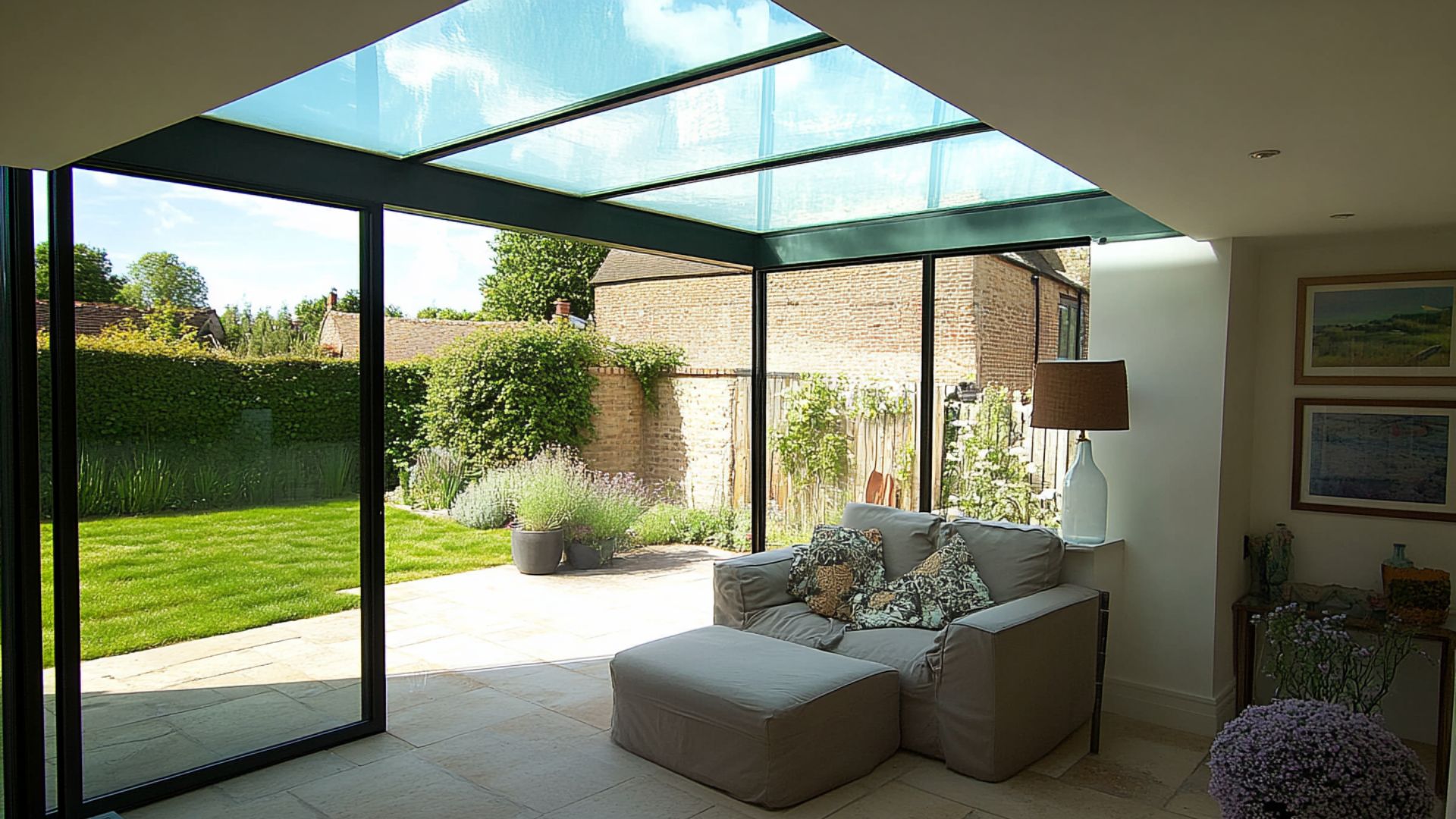Innovative and Creative Concepts for Modern Glazing



Harnessing Natural Daylight: Health Benefits and Safe Glazing Solutions
Natural Daylight and Human Health
Introduction
Natural daylight is essential for our overall well-being, playing a crucial role in various aspects of our health. Exposure to sunlight helps regulate our sleep patterns, boosts our mood, and is vital for the synthesis of vitamin D, which is important for bone health and immune function. However, while sunlight has many benefits, it also comes with risks, particularly due to ultraviolet (UV) light exposure. Understanding the types of UV light and their effects on our health is key to maximizing the benefits of natural daylight while minimizing its potential harms.
Understanding Ultraviolet (UV) Light
UV light is a form of electromagnetic radiation with wavelengths ranging from 10 to 400 nanometers. It constitutes about 10% of the total electromagnetic radiation output from the Sun. The UV spectrum can be subdivided into three main categories, each with distinct properties and effects on health:
- Ultraviolet A (UVA)
Long-wave UV, also known as black light, has wavelengths between 315 and 400 nanometers. UVA is not absorbed by the ozone layer and constitutes the majority of UV radiation that reaches the Earth’s surface. It penetrates deeply into the skin and can contribute to skin aging and indirect DNA damage, potentially leading to skin cancer over prolonged exposure.
- Ultraviolet B (UVB)
Medium-wave UV, with wavelengths between 280 and 315 nanometers, is mostly absorbed by the ozone layer. However, the UVB that does reach the Earth’s surface is crucial for vitamin D synthesis in the skin. Despite its benefits, overexposure to UVB can cause sunburn and direct DNA damage, increasing the risk of skin cancer.
- Ultraviolet C (UVC)
Short-wave UV, with wavelengths between 100 and 280 nanometers, is completely absorbed by the ozone layer and the Earth’s atmosphere, so it does not reach the surface. UVC is the most harmful type of UV radiation, but fortunately, it poses no direct risk to humans under natural conditions.
By understanding these types of UV light, we can better appreciate the balance needed to harness the health benefits of natural daylight while protecting ourselves from its potential dangers. This knowledge also guides us in choosing the right glazing solutions to enjoy natural light safely in our homes.
Health Messages and UV Exposure
Public Health Messages on the Hazards of Excessive Sun Exposure
For decades, public health campaigns have emphasized the dangers of excessive sun exposure. The primary focus has been on the risks associated with prolonged exposure to ultraviolet radiation (UVR), particularly the potential for skin damage and the development of skin cancer. Sunscreen use, wearing protective clothing, and seeking shade during peak sunlight hours are common recommendations to mitigate these risks.
WHO Report Findings
According to the World Health Organization (WHO), while excessive UVR exposure does pose health risks, its impact on the global disease burden is relatively minimal. The WHO report titled “The Global Burden of Disease Due to Ultraviolet Radiation” highlights that:
• Excessive UVR exposure accounts for only 0.1% of the total global disease burden measured in disability-adjusted life years (DALYs). DALYs quantify the reduction in a person’s expectancy of healthy life due to premature death or disability caused by disease.
• Levels of UVR exposure, however, can lead to significant health issues, contributing to a markedly larger annual disease burden of 3.3 billion DALYs worldwide. Insufficient UVR exposure is associated with major disorders of the musculoskeletal system and an increased risk of various autoimmune diseases and life-threatening cancers.
Benefits of Sunlight
Despite the risks of excessive UV exposure, sunlight also provides numerous health benefits that are essential for well-being.
- Vitamin D Production
Sunlight, particularly UVB rays, plays a crucial role in vitamin D synthesis. This vitamin is vital for the health of bones, blood cells, and the immune system. UVB rays help the skin produce vitamin D, which aids in the absorption and use of minerals like calcium and phosphorus. While most people can get enough vitamin D from food or supplements, sunlight is a natural and effective source.
- Improved Sleep
Sunlight helps regulate the body’s internal clock, or circadian rhythm, which is essential for good sleep. Morning sunlight, in particular, has been shown to help people fall asleep more easily at night. This becomes increasingly important with age, as older adults’ eyes are less able to take in light, often leading to sleep problems.
- Weight Loss
Exposure to morning light has been linked to better weight management. Spending 20 to 30 minutes in sunlight between 8 a.m. and noon can aid in maintaining a healthy weight. Researchers suggest that sunlight may help shrink fat cells beneath the skin’s surface. Additionally, more sunlight often means more outdoor activity, which contributes to overall physical fitness and weight loss.
- Emotional Well-Being
Sunlight boosts serotonin levels in the brain, which can enhance mood, increase energy, and promote a sense of calm and focus. Light therapy, using natural or artificial light, is a common treatment for seasonal affective disorder (SAD) and other forms of depression linked to low serotonin levels.
- Eye Health
Moderate exposure to sunlight during youth may help reduce the risk of developing near-sightedness (myopia). The natural light helps the eyes develop properly, promoting better vision over time.
- Skin Health
Controlled, small amounts of UV light can be beneficial for certain skin conditions, such as eczema, psoriasis, and vitiligo. UV light therapy is often used to alleviate the symptoms of these conditions, promoting healthier skin.
Optimizing Daylight Indoors with Safe Glazing
Introduction
Bringing natural daylight into your home offers numerous health benefits, but it’s important to do so safely to minimize the risks associated with ultraviolet (UV) exposure. The right type of glass can help maximize the positive effects of sunlight while protecting you from harmful UV rays. Let’s explore how specific glass types can achieve this balance.
Example of a Standard Insulated Glazing Unit
A typical insulated glazing unit (IGU) can help improve energy efficiency and comfort in your home. Here’s a standard composition:
- Composition:
- 6mm clear glass
- 16mm Argon filled cavity
- 6mm clear glass
This configuration provides good thermal insulation, but the UV transmittance is around 54.8%. While it allows a significant amount of natural light into your home, it doesn’t effectively block UV rays.
Improved Glazing with Laminated Glass
For better protection against UV exposure, consider upgrading to laminated glass. Here’s an improved configuration:
- Composition:
- 6mm clear glass
- 16mm Argon filled cavity
- 6.8mm clear laminated glass
With this setup, the UV transmittance is reduced to just 0.5%. Laminated glass consists of two or more layers of glass with an interlayer that blocks most UV rays while allowing natural light to pass through. This significantly reduces the potential for UV-related health risks while still providing the benefits of daylight.
Conclusion
Inviting natural daylight into your home can lead to a happier, healthier life. By choosing the right glazing solutions, you can enjoy the positive effects of sunlight while minimizing exposure to harmful UV rays. Proper glazing not only enhances your living environment but also contributes to overall well-being.
Explore our range of glazing options designed to optimize natural daylight in your home while protecting you from UV exposure. Contact us today for more information and professional advice on the best glazing solutions for your needs. Let’s work together to create a brighter, safer, and healthier living space for you and your family.




